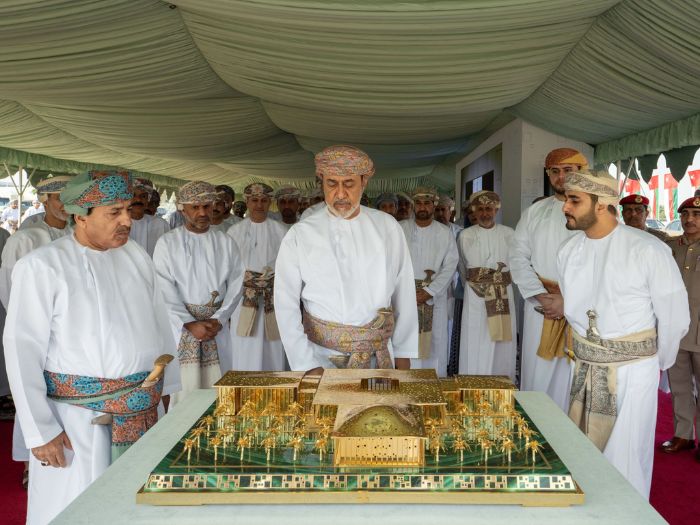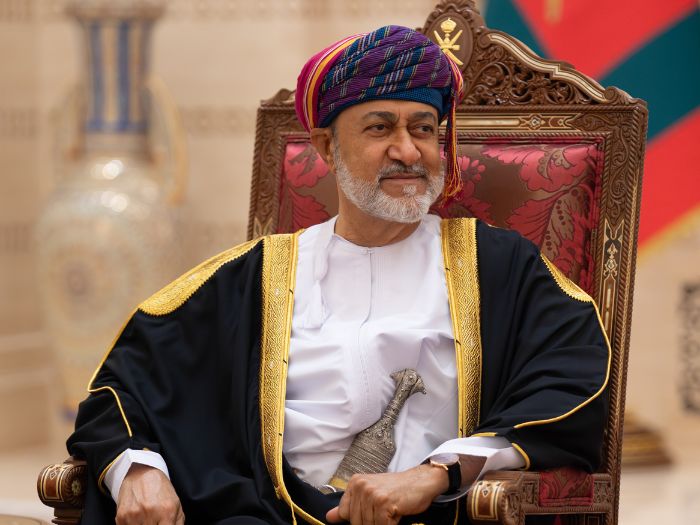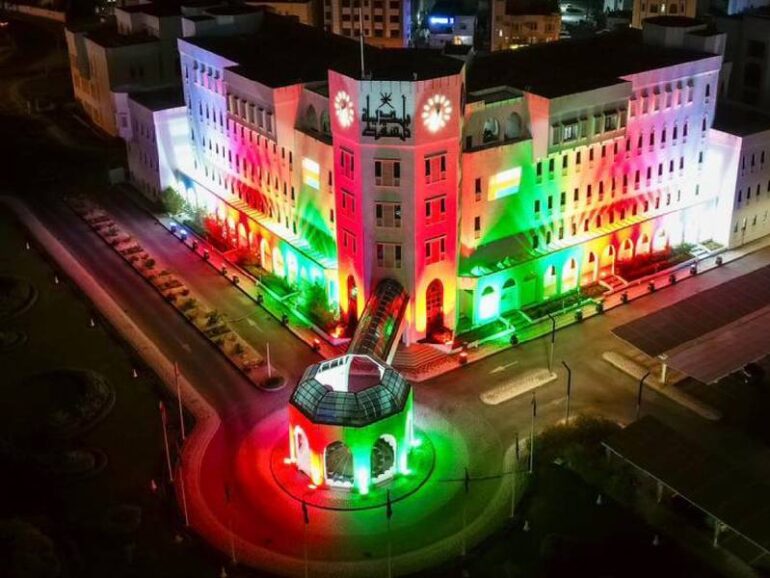
Muscat – Oman has completed more than hundred national projects in the first five years of Vision 2040, marking substantial progress across the four pillars of the long-term development framework. According to the Oman Vision 2040 Follow-up Unit, the period from 2021 to 2025 saw the implementation of hundreds of projects and initiatives aimed at […]
Muscat – Oman has completed more than hundred national projects in the first five years of Vision 2040, marking substantial progress across the four pillars of the long-term development framework. According to the Oman Vision 2040 Follow-up Unit, the period from 2021 to 2025 saw the implementation of hundreds of projects and initiatives aimed at strengthening education, healthcare, economic diversification, environmental sustainability and institutional performance.
The People and Society pillar recorded broad gains in education, community development and social protection. A total of 188 schools were built or renovated, and the Ministry of Education began introducing digital curricula for all grades. The Noor e-learning platform, launched in its first phase, now serves 140 schools with interactive digital content. A new technical and vocational track for grades 11 and 12 opened in Muscat, North Batinah, Dhofar and Dakhliyah, offering specialisations in business, IT, tourism and travel services.

Higher education also underwent major restructuring with the formation of the University of Technology and Applied Sciences, which merged existing technical and applied sciences colleges. The institution now hosts more than 48,000 students across 11 campuses and offers 48 programmes. Innovation initiatives expanded with the Industrial Innovation Academy, which trained more than 360 young Omanis and supported over 40 national factories.
Healthcare services continued to grow. New hospitals were established in Dhofar along with the construction of major facilities in Salalah, Suwaiq and Khasab. The expansion of Suhar Hospital and other projects added more than 1,800 beds with investments exceeding RO300mn. New medical cities, laboratories and private hospitals strengthened national capabilities, while Omani medical teams performed complex surgeries, including the separation of conjoined twins, a heart transplant and advanced neurosurgical procedures.
Social protection programmes also expanded. The Social Protection Fund serves more than 1.45mn beneficiaries, while the newly opened National Autism Centre provides therapeutic and rehabilitation services. Cultural development gained momentum with the opening of major museums and heritage centres, and the ‘Message of Peace from the Sultanate of Oman’ exhibition reached 136 international destinations.

Economic diversification remained central to the Vision. Mining projects advanced, including the Shuwamiyah Industrial Minerals Project targeting 40mn tonnes a year of industrial minerals. In heavy and medium industries, Duqm Refinery entered operation in 2024 with a capacity set to rise to 255,000 barrels a day in 2025. New facilities in chemicals, metals, automotive assembly and silicon manufacturing came online, while large-scale polymer and renewable energy equipment factories are under development.
Logistics infrastructure saw major upgrades. Road projects included the 725km Empty Quarter Road and the Dibba–Lima–Khasab Road. The Asyad Container Terminal began operating in Duqm, while the joint Oman-UAE Hafeet Rail project is set to link Abu Dhabi and Suhar with a journey time of 100 minutes.
Tourism investment advanced through projects such as Yiti Sustainable City and the Muttrah Cable Car, expected to open in 2026. Food security also strengthened with new aquaculture projects and wheat cultivation initiatives. Urban development moved forward with the Sorouh housing projects, comprising nearly 10,000 units, and Sultan Haitham City, designed to accommodate 100,000 residents. Work also began on the region’s first commercial spaceport.
Environmental and sustainability efforts expanded under the National Net Zero Strategy. Renewable energy projects in solar and wind advanced across several governorates with capacities exceeding 2,000MW. Five new nature reserves were added, and the Oman Botanic Garden in Seeb – now the largest in the Arab world – continued to grow its collection of rare plant species. Green mobility initiatives included the National Electric Mobility Network and shore-power facilities at Sohar Port.
Governance and institutional reforms improved administrative and judicial efficiency. The establishment of the Investment and Commercial Court accelerated dispute resolution, while appeal processing times at the Supreme Court were reduced. Digital government services grew rapidly, with the National Unified Government Services Portal recording 14.5mn transactions in the first quarter of 2025 and offering 267 fully automated services.
The Oman Vision 2040 Follow-up Unit said the achievements recorded between 2021 and 2025 lay the groundwork for the next phase of development as the sultanate advances towards its long-term national goals.


 Liwa Link dual road opens to boost mobility and economic activity
Liwa Link dual road opens to boost mobility and economic activity
 H M renames Oman Cultural Complex after Sayyid Tarik bin Taimur
H M renames Oman Cultural Complex after Sayyid Tarik bin Taimur
 His Majesty issues a supreme royal decree
His Majesty issues a supreme royal decree
 Maritime heritage anchors Oman’s global cultural identity
Maritime heritage anchors Oman’s global cultural identity
 Decked out for National Day 2025
Decked out for National Day 2025
 New digital platform presents Oman’s story to the world
New digital platform presents Oman’s story to the world